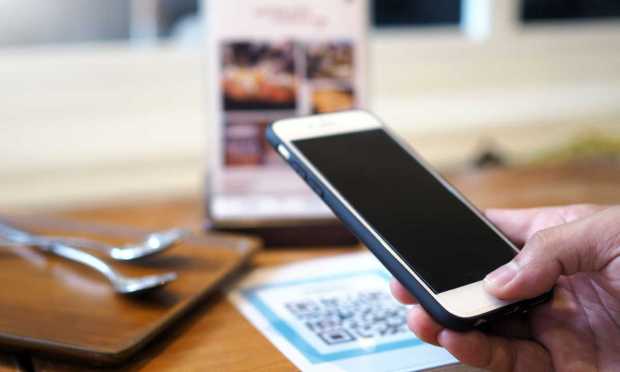QR Code Ordering Reaches New Venues Despite Consumer Ambivalence

QR codes continue to be a key part of how consumers order and pay for their food within restaurants and without, whether they like it or not. In addition to the large share of restaurants that utilize the technology, additional kinds of food-selling venues have been adding QR codes to drive efficiency.
In late September, for instance, SportTechie reported that mobile technology company Digital Seat Media has added more than 61,000 QR codes on metal seat tags to the football stadium at University of Missouri, enabling consumers to order food from their seats among other features.
The previous month, restaurant commerce platform GoTab announced the launch of GoTab for Multi-Operator Locations, which allows venues such as food halls and sporting arenas to process each food seller’s transactions through a single platform that leverages QR code order-and-pay, among other offerings.
You may also like: GoTab: Resistance to Automation Keeps Stadium Payments Stuck in the Past
Indeed, QR codes can boost efficiency in cases where diners hope to get their food and get out, but as contagion concerns have subsided, QR codes have not proven to be as popular fore dine-in occasions. Data from the May/June edition of PYMNTS’ Digital Divide study, “The Digital Divide: Technology, The Metaverse And The Future Of Dining Out,” which drew from an April survey of about 2,500 U.S. consumers, reveal that more than half (51%) of grab-and-go customers state that viewing a menu with a QR code has a positive impact on their satisfaction. Yet only 26% of dine-in customers say the same.
Related: Restaurants Tinker With Tech Recipe to Balance Efficiency and Personal Service
Consequently, while some restaurants remain all-in on QR codes, others have heeded the mixed or negative responses of their customers and returned to the traditional method, according to PYMNTS research from earlier this year. Findings from the 2022 edition of PYMNTS’ Restaurant Readiness Index reveal that the share of eateries offering the ability to place orders at the table using a QR code fell 17 points from 42% in September 2021 to 25% in April.
Read more: More Than Half of Restaurants Depend on Digital Sales, Despite Uptick in on-Premises Orders
“People are frustrated, especially people 40 years and older,” Michele Baker Benesch, president of Menu Men, a company that designs and manufacturers print and digital menus, told PYMNTS in an interview early this year. “Sometimes their phones don’t work. They don’t know how to access the QR code. So, before they even get to order a beverage … they’re already upset, and that hampers the entire customer experience.”
See also: Many Restaurant Customers Feel Alienated by QR Code Menus
That said, QR codes can have advantages for restaurants outside of either the labor savings or the customer experience — gathering key feedback. Moritz Heininger, founder and managing director at Berlin-based FinTech DIDIT, noted to PYMNTS in an interview that the company has added a feature whereby it asks customers to leave reviews at self-checkout. If they rate the brand three stars or less, the review remains for the restaurant’s eyes only, but if they rate it higher, they can post the review on Google Maps from there.
Consequently, digital payments within the restaurant can equip eateries with “marketing capabilities that only eCommerce stores would normally have.”
Additional details: German Restaurants Find QR Codes Source of New Data Insights
